Taiwan cypress forests have characteristics of long rotation and high economic values. For carbon dioxide accumulation of trees natural stands were the highest among all kinds of the cypress forests in Chilanshan area, 637 Mg/ha, while for annual carbon dioxide sequestration per hectare the red-cypress plantations were the highest, from 9.53 to10.31 Mg, the thinned natural seedling regeneration stands the second, then the natural seedling regeneration stands, and the natural stands the lowest, only 3.75 Mg, which means proper tending practices such as pruning and thinning will increase carbon dioxide sequestration of the cypress forests.
The inter-planting practices in farmlands are encouraged in agroforestry research. In open tea farms inter-planting with Calocedrus formosana by low density, 100 trees/ha, carbon dioxide accumulation was estimated 65 Mg/ha at age 15, which was 62% higher than that of the stand at age 14. In betelnut palm farms inter-planting with C. formosana were big enough to replace betelnut palms. Meanwhile, if betelnut palm farms inter-planting with C. formosana were treated with good management, it is not necessary to remove all betelnut palms at the beginning of planting trees, the farms have the potential to accumulate carbon as much as normal forest ecosystems. The economic effects are the major concern by farmers to apply the intensive management on farmland afforestation.
To increase the productivity of the farmland and wood properties by the intensive management not only raises economic values, but also reaches the goal of carbon sink effects. The annual amounts of carbon dioxide accumulation in the farmland afforestation with thinning tending in Kuanmiao area increased from 22.1 to 32.8 Mg/ha for planting Swietenia mahagoni and from 24.0 to 26.2 Mg/ha for planting Araucaria cunninghamii. In Chaofeng area the annual carbon dioxide sequestration of the failure plantations on agricultural lands was 0.06 Mg/ha, while that of successful farmland afforestation with closed canopy was 9.42 Mg/ha. The latter sequestration was 157 times higher than the former, which indicated tree selection is the key of successful farmland afforestation.
In addition, a feasible activity paradigm for domestic afforestation and forest carbon management was established basic on small-scale CDM methodology of carbon sequestration. For carbon sink the program of farmland afforestation in Kuangfu of Hualien county was selected to analyze and evaluate carbon sequestration of the paradigm. The forests of 971.3 hectares on the farmland, which was established from 2002 to 2004, were estimated to accumulate 220,980 tons carbon dioxide from the atmosphere in 20 years.
Finally, the preliminary results indicate that multi-stratified forests, farmland afforestation, and agroforestry will increase carbon sequestration through intensive management and proper tending practices to reach the goals of carbon dioxide reduction in the atmosphere and serve other forest ecological functions as well.
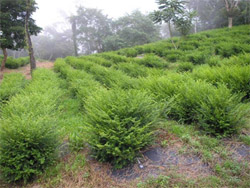
Taxus sumatrana “Taiyew No 1” grew uniformly and stably.
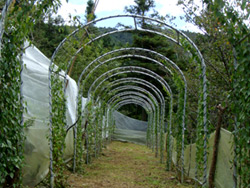
Schisandra arisanensis were planted in the Liugui Research Station
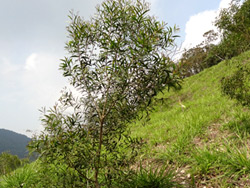
Seed orchard of Acacia confusa.
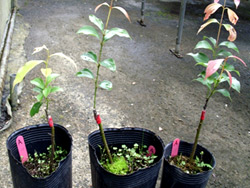
Cinnamomum osmophloeum “linalool type” grafting onto C. bumanni.
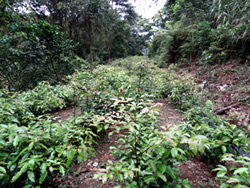
Scion garden of Cinnamomum kanehirae.
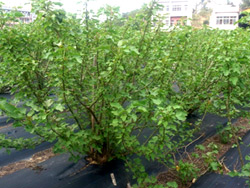
Seed mass garden of Jatropha curcas.
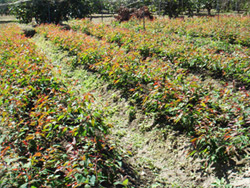
Scion garden of Eucalypts.
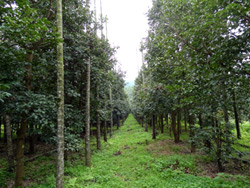
Areca catchu interplanting with Cinnamomum kanehirae.
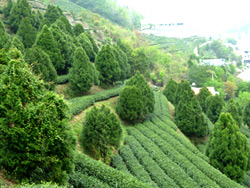
Tea garden interplanting Calocedrus formosana.
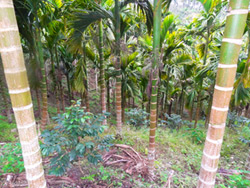
Areca catchu interplanting with Cinnamomum osmophloeum.
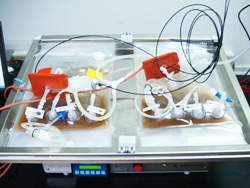
Transgenic cells cultured in a wave bioreactor.
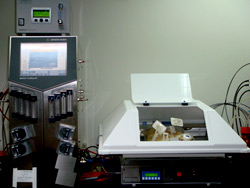
Transgenic hairy roots cultured in a wave bioreactoro.
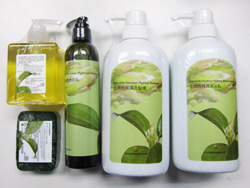
Cleaning products produced from leaves of C. osmophloeum.

Sking care products produced from fruit of Calophyllum inophyllum.
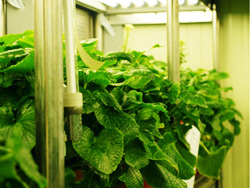
Wasabia japonica grew well in a plant factory.